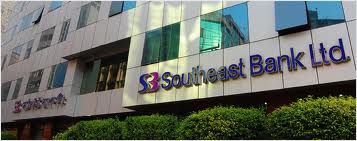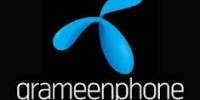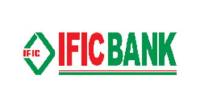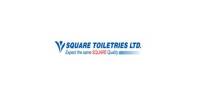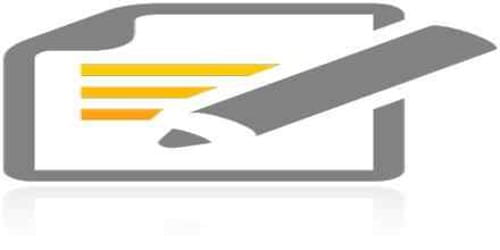Corporate Goal
United Leasing Company Ltd a joint venture non-bank financial institution engaged mainly in lease finance business and bills discounting.
Question No.1. What is the corporate goal of the firm? Do you think the goal of the firm is well-defined? If the goal the firm is not stated anywhere in the annual report then what do you think the goal of the firm should be?
- Answer: The corporate goals of United Leasing Company Ltd. are:
- Ensuring highest return and growth of their shareholders’ assets.
- Valuing their social obligations.
- Providing best compensation to all the employees who constitute the backbone of the management and operational strength of the company.
- Co-operation of the creditors and debtors the bank and financial institutions who provide financial support.
- Fulfillment their responsibility to the government through payment of tax duties and claims by various public agencies.
- Striving for an environment free from pollution and poisoning.
- Striving for the achievement of millennium Development goals for the Human Civilization
Question No.2. What is your comment regarding the corporate social responsibility (CSR) of the firm? Is anything stated about the CSR in the annual report?
Answer:
The firm is highly awoken of the corporate social responsibilities (CSR). The firm’s corporate social responsibility is well diversified. They are very aware about the internal environment and also responsible to the social activities.
The CRS of United Leasing Company Ltd. stated in the annual report is:
The board of director is awoken of the corporate social responsibilities especially in the areas of gender equality, race-religion-regional equality, social-marketing, social activities (promotion of sports & culture, health care and population control programs, elimination of corruption programs, participation in charitable activities etc. in non-partisan manner) right to form and participate in Union under ILO convention, employment of disables etc.
Valuation
Question No.3. What is the book value of the firm?
Answer:
The Book Value of the Firm
= Face Value of Share × Total Outstanding Share + Retain Earnings
+ Book Value of Long term Debt.
= (100 *700000+1400000*100) + (42000000+21000000+5379552)
+1959964676
= 2238344228
Question No.4. What is the market value of the firm?
Answer:
Market Value
= Market price of the Last Year Share × Total Outstanding Share
+ Book Value of Long term Debt.
= ?????????? × 100923 + 492569379
= ???????????
Question No.5. Using Price-earning multiples of the Industry, find out the price of the share of the company.
Answer:
Price per Share
Price Earning Multipliers of the Industry =Earning per Share ??????
= 69
=?????
Question No.6. Compute FCF to the equity holders over the 5 years forecasted periods and discount these free cash flows at the cost of equity (with an average growth rate) to arrive at the price of the company.
Financial Statements & Analysis
Question No. 7. What are the Financial Statements the Firm has included in the Annual Report?
Financial Statements that the company has included in the Annual Report
Balance sheet
Profit & Loss Account
Statement of Changes in Equity
Cash Flow Statement
Question No.8. Analysis your firms behavior with the analysis of structure, conduct and performance of the industry to which your firm belong.
Answer:
The principal activities of the Company are:
Long term financing in the form of lease and term loan
Short term financing in the form of factoring of accounts receivable and short term revolving loan.
Home loan product was introduced at the end of 2007 as a part of its product diversification commitment.
Question No.9. Evaluate the firm’s financial condition of the recent five years using the ratios like
a) Liquidity (CR , QR)
b) Efficiency & activity (A/R period, Inventory period, TAT, Operating and cash cycle)
c) Solvency (debt equity ratio, debt to total asset, debt service coverage ratio )
d) Profitability (OPM, NPM, ROA , ROE) and
e) Market (BV/MV, P/E ratio, TOBIN Q).
Answer:
(a)Liquidity Ratios
| Year | 2007 | 2006 | 2005 | 2004 | 2003 |
| Current Ratio | 1.07:1 | 0.9:1 | 1.39:1 | 1.33:1 | 1.20:1 |
| Quick Ratio | 1.07:1 | 0.9:1 | 1.39:1 | 1.33:1 | 1.20:1 |
(c) Solvency Ratio
| Year | 2007 | 2006 | 2005 | 2004 | 2003 |
| Debt-Equity Ratio | 6.6 | 5.7 | 5.3 | 5.9 | 6.0 |
| Debt to total assets | |||||
| Debt service ratio |
Question No.10. Prepare five factors Du Pont Analysis for the firm. If you want to increase the ROE what may be your course of actions? Suggest specific actions.
Answer:
ROE = ROA × Equity Multiplier
Net Income Total Asset
= ×
Total Asset Equity
= Net Income
Equity
= 144538853
1037129552
= 0.1393
= 13.93%
This is the Du Pond analysis of the firm- strategic study of the financial ratios describing the firm’s ROE. For increasing ROE we can increase Net Income or decrease Equity. But decreasing equity is not desirable to the management of the firm. Here increase in net income is rational action
TAX
Question No.11. Compute the average tax rate for the company for recent two years. In which year the company paid higher tax amount? Between the years , which year the company paid lower amount of tax due to depreciation and interest expense?
Risk & Return Analysis
Question No.12. What is the stock return from the company for the most recent year? Do you find this return as attractive?
Question No.13. Calculate the Bets of the company using five year monthly data series and then adjust Beta.
Question No.14. Estimate cost of Equity/RRR of the company using CAPM.
Operating & Financial Leverage
Question No.15. Using your judgment, make a list of variable cost, and fixed costs of the company.
Answer:
List of variable costs –
| Name of the Expense | 2006 | 2007 |
| Financial Expense | 432295281 | 541926190 |
| Administrative Expense | 79311892 | 88313867 |
| Provision for doubtful assets | 58931980 | 92329049 |
| Depreciation on Property, plant, & equipment | 5135083 | 6059933 |
| Amortization on intangible assets | 472640 | 472640 |
| Total variable cost | 576146876 | 729101679 |
List of fixed costs –
| Fixed costs | 2006 | 2007 |
| Purchase of Property, plant , & equipment
| 17260361 | 7054000 |
| Total Fixed Cost | 17260361 | 7054000 |
Question No.16. Compute the breakeven point (in revenue) of the company. How much is the margin of safety in the most recent year?
Question No.17. Compute the degree of operating leverage (DOL) of the company.
Answer:
% change in EBIT
DOL =
% change in Operating revenue
EBIT 2007 – EBIT 2006
EBIT 2006
=
Operating revenue 2007 – Operating revenue 2006
Operating revenue 2006
201304752-178894374
178894374
930529186-739236646
739236646
= 0.484
Question No.18. Compute the degree of financial leverage (DFL) of the company.
Answer:
EPS in 2007- EPS 2006
EPS 2006
DFL =
EBIT 2007 – EBIT 2006
EBIT 2006
69-59
59
=201304752-178894374
178894374
= 1.349
Question No.19. Compute the degree of total leverage (DTL) of the company.
Answer:
DTL = DOL × DFL
= 0.484× 1.349
= 0.652
Cost of Capital & Capital Structure
Question No.20. What is the company’s cost of equity? What is the cost of debt? What is the company’s current cost of capital (hurdle rate)?
Question No.21. Analyze the optimum debt equity ratio of the company using the checklist of capital structure.
Working Capital
Question No.22. Compute the working capital required for the recent two years. Compare each year’s working capital with the related sales. Do you find any pattern? Using the financial ratios related to the working capital comment on the working capital management.
Answer:
Working Capital
Year | Current Asset – Current Liability | Amount (TK) |
2006 | 2802093758–3312484552 | -510390794 |
2007 | 4149080853–3871921740 | 277159113 |
Question No.23. Compute the required new fund (RNF) for the next year if the sales are forecaster to be increased by 10% in the next year.
